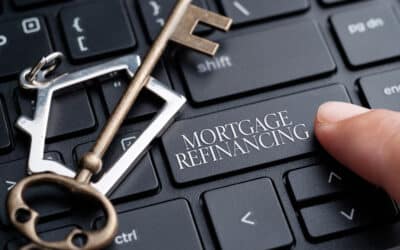
How Do I Buy A House With A Small Deposit
Let’s face it, the Australian Dream of owning your own home has become an Everest-like challenge these days. With property prices continuing to soar despite higher interest rates, fewer Australians are realising this cherished dream. But before you dismiss it as old news, let’s pause and explore what options exist for those still aspiring to make this dream a reality.
Besides tapping into the Bank of Mum and Dad or saving 5-10% deposit (which, with property prices averaging around $650k in Australia, equates to $35k to $65k in savings), what other avenues are available? Are there government programs or lending products designed to assist? If so, what are they, and what are their pros and cons?
The government and states/territories offer a few grants and programs, although their effectiveness is subjective. Let’s delve into what they are, along with other lending products that might aid you on this journey. Please note that this is not an exhaustive list, but rather the go-to options when seeking assistance in entering the property market.
Option 1: The Home Guarantee Scheme (HGS)
The Home Guarantee Scheme, an Australian Government initiative, provides three types of Guarantees catering to different buyer demographics:
1. First Home Guarantee (FHBG):
This scheme aims to help eligible first home buyers own their first property sooner. It allows buyers to purchase a home with a deposit as low as 5% without the need for Lenders Mortgage Insurance. Housing Australia guarantees part of an eligible home buyer’s home loan from a Participating Lender, enabling the purchase with as little as a 5% deposit without paying Lenders Mortgage Insurance. Eligibility criteria apply.
2. Regional First Home Buyer Guarantee (RFHBG):
Designed to assist regional customers in purchasing a home in designated regional areas, this scheme allows the purchase of a new or existing home with a deposit as little as 5%. It supports eligible regional home buyers in buying a home sooner, with Housing Australia guaranteeing part of their home loan from a Participating Lender. Eligibility criteria apply.
3. Family Home Guarantee (FHG):
This initiative aids eligible single parents or single legal guardians of at least one dependent in purchasing a home sooner. It enables them to buy a home with a deposit as little as 2%, with Housing Australia guaranteeing part of their home loan from a Participating Lender. Eligibility criteria apply.
Pros:
- Low deposit requirement (2-5%)
- No Lenders Mortgage Insurance
- Tailored to different buyer demographics
Cons:
- Eligibility criteria may limit accessibility
- Specific deposit savings requirements
Option 2: Shared Equity Schemes
These schemes, available in various states and territories, involve the government sharing ownership of the property, entitling them to a portion of the property’s capital growth. While this may seem daunting, it offers a viable option for those struggling to save for a reasonable deposit amidst soaring property prices.
How it works: These schemes act as partners in the property buying journey, contributing a portion of the purchase price in exchange for ownership. Repayment occurs upon property sale or refinancing, with the government entitled to a share of the capital growth in proportion to their ownership. Deposit requirements typically range from 2-5%.
Pros:
- Facilitates early entry into the property market
- Lower deposit requirement
- No Lenders Mortgage Insurance
Cons:
- Government’s ownership stake may affect property value appreciation
- Repayment upon property sale or refinancing
- Income caps and other eligibility requirements
Option 3: 100% Lend, No Deposit?
Popularised through social media, this option allows buyers to secure a loan without a deposit, provided they cover loan fees and stamp duty. It involves two loans: one at 80% over a 30-year term and the other 20% over a 15-year term, with varying interest rates. Although stringent eligibility criteria apply, it offers a pathway to homeownership for non-first home buyers seeking to purchase an owner-occupied property.
Pros:
- Facilitates entry into the property market without upfront deposit
- Offers flexibility for those lacking funds for a deposit or needing to purchase a new property
Cons:
- Stringent eligibility criteria
- Two-loan structure with varying interest rates
By exploring these options, you can take significant steps towards realising your dream of homeownership. At Positive Money, we specialize in guiding clients through these options and helping them find the best fit for their circumstances. For personalised assistance, book a consultation with us today.
Disclaimer:
The information provided is general in nature and not intended as financial advice. Prospective buyers should conduct thorough research and consider consulting with financial professionals before making any decisions.
References:
1. [NSW Shared Equity Scheme](https://www.nsw.gov.au/housing-and-construction/home-buying-assistance/shared-equity)
2. [VIC Victorian Homebuyer Fund](https://www.sro.vic.gov.au/homebuyer)
3. [The Home Guarantee Scheme](https://www.housingaustralia.gov.au/support-buy-home)
4. [OwnHome](https://ownhome.com/about-us)
Looking for Finance?
Book a Meeting
Recent Articles
Mortgage Rates on the Rise: What it Means for Homeowners and Prospective Buyers
Purchasing a new property is a very exciting time for investors and home buyers alike. You’re ready to hone in on the perfect piece of real estate and are itching to steamroll things forward, right? Unfortunately, there are a few market factors that could currently be impacting your borrowing power and raining on your property parade. As discussed in Part 1: How to boost your borrowing power in a rising market, the pandemic has significantly shaken people’s ability to secure finance right now.
Part 2: How To Boost Your Borrowing Power In A Rising Market
Purchasing a new property is a very exciting time for investors and home buyers alike. You’re ready to hone in on the perfect piece of real estate and are itching to steamroll things forward, right? Unfortunately, there are a few market factors that could currently be impacting your borrowing power and raining on your property parade. As discussed in Part 1: How to boost your borrowing power in a rising market, the pandemic has significantly shaken people’s ability to secure finance right now.
Part 1: How To Boost Your Borrowing Power In A Rising Market
There are herculean upheavals occurring in the market right now. A pandemic, recessions, inflation, and rising interest rates have all taken solid swings at the property market, and the result? Well let’s just say many of us are or will be wading through a phase of economic turmoil. To ice the cake, borrowing power has plummeted too. With borrowing a critical aspect of investing in property, it’s important to understand if and how the current climate of lending will impact your ability to build a multi-million-dollar property portfolio.
Refinancing Your Mortgage: Do’s and Don’ts explained
As interest rates continue to soar, many Australians are feeling the pinch and turning to refinancing to cut costs. It’s only natural that if you do currently have a home loan, you’ll be curious about where you can get a better deal on interest rates, or at the very least, improved loan features. But, while refinancing your mortgage could see you enjoying thousands in savings, it could actually cost you more in the long run if you don’t do your homework before making the switch.




